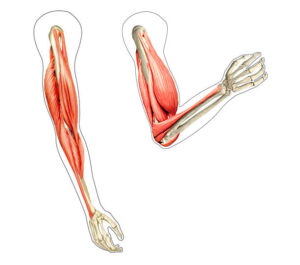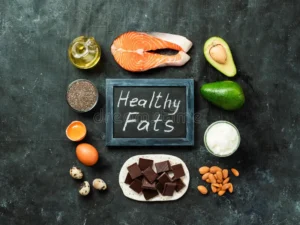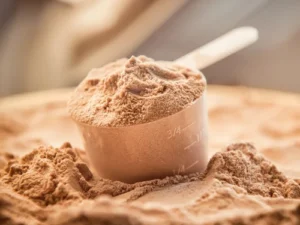How to build biceps

Introduction
For many fitness enthusiasts, the question of “how to build biceps effectively” is a common quest. In this SEO-friendly blog post, we will provide a comprehensive guide to help you understand the principles, exercises, and nutrition required to build bigger and stronger biceps successfully,How to build biceps.
Section 1: Unpacking Biceps Anatomy

Understanding the anatomy of your biceps is vital for anyone on the journey of learning “how to build biceps.” The biceps, known as biceps brachii, are composed of two heads: the long head and the short head. Effective bicep training involves targeting both heads for well-rounded development,How to build biceps.
Section 2: The Role of Proper Nutrition in Bicep Growth
2.1 Protein: The Key to Bicep Growth

Protein is the cornerstone of muscle development, including your biceps. To facilitate the growth of your biceps, it is essential to consume a daily protein intake ranging from 1.2 to 2.2 grams per kilogram of body weight.
2.2 Caloric Surplus: Fueling Bicep Growth

Building bigger biceps requires a caloric surplus—consuming more calories than your body burns. However, it’s crucial to manage this surplus to avoid unwanted fat gain while effectively building your biceps,How to build biceps.
2.3 Healthy Fats and Hormonal Balance

Incorporate healthy fats, such as avocados, nuts, and olive oil, into your diet. These fats support hormonal balance, which plays a pivotal role in muscle growth for your biceps,How to build biceps.
2.4 Carbohydrates: The Energy Source for Bicep Workouts

Complex carbohydrates provide the energy necessary for intense bicep workouts. Including whole grains, fruits, and vegetables in your diet is essential to fuel your training and support bicep growth.
Section 3: Effective Bicep Exercises
3.1 Standing Barbell Curls: A Classic for Bicep Growth

Standing barbell curls are a classic bicep exercise that effectively targets the long head of your biceps. Ensure proper form and progressively increase the weight as you work toward building bigger and stronger biceps.
3.2 Alternating Dumbbell Curls: Focusing on Balanced Bicep Development

Alternating dumbbell curls allow you to focus on each arm individually, promoting balanced bicep development, a key aspect of “how to build biceps.”
3.3 Hammer Curls: Adding Depth to Bicep Growth

Hammer curls work both the biceps and the brachialis muscle, adding depth to your bicep development.
3.4 Preacher Curls: Isolating the Biceps

Preacher curls isolate the biceps, providing a full range of motion and a fantastic stretch, promoting effective bicep growth.
3.5 Concentration Curls: Targeting the Short Head

Concentration curls are an excellent exercise for targeting the short head of the biceps brachii, contributing to well-rounded bicep development.
Section 4: The Principle of Progressive Overload in Bicep Training

To effectively build bigger biceps, the principle of progressive overload must be consistently applied. Challenge your biceps with heavier weights and increased resistance as your strength grows. Monitor your progress and aim for continual improvement in every bicep workout to support effective bicep growth.
Section 5: Bicep Training Frequency: Striking the Right Balance

Balancing your bicep training frequency is vital for effective bicep growth. Aim for at least two bicep workouts each week to provide the necessary stimulus for growth while allowing for adequate recovery.
Section 6: Rest and Recovery for Optimal Bicep Growth

Adequate rest and recovery are essential for promoting bicep muscle growth. Ensure you get 7-9 hours of quality sleep each night and engage in light activities like walking or yoga on rest days to support overall recovery, a key element in “how to build biceps” effectively.
Section 7: Avoiding Bicep Overtraining

Overtraining can hinder bicep growth. Pay attention to symptoms like chronic fatigue, decreased strength, and persistent soreness in your biceps. If you experience these signs, consider reducing your bicep training intensity and granting your biceps the necessary rest.
Section 8: Supplements to Support Bicep Growth
While proper nutrition is essential, certain supplements can facilitate bicep muscle growth. Consider the following:
8.1 Protein Supplements: Boosting Bicep Growth

Whey protein, casein, and plant-based protein supplements can help you meet your daily protein requirements, supporting the growth of your biceps effectively. This post is sponsored by our partners Wigs
8.2 Creatine: Enhancing Bicep Growth

Creatine has been shown to enhance muscle growth and improve exercise performance, making it a
valuable addition to your bicep-building strategy.
8.3 Branched-Chain Amino Acids (BCAAs): Reducing Soreness and Aiding Recovery

BCAAs can reduce muscle soreness and contribute to faster muscle recovery during the process of building bigger and stronger biceps.
Section 9: The Importance of Patience and Consistency

Building bigger and stronger biceps is a journey that requires time and unwavering commitment. Understand that results won’t manifest overnight, but with dedication and patience, you’ll experience significant improvements in your bicep size and strength.
Conclusion
Building bigger and stronger biceps is a realistic goal with the right combination of nutrition, exercise, and determination. By following the strategies and exercises outlined in this SEO-friendly blog post, you can embark on a successful journey toward well-developed biceps. Individual results may vary, so maintain consistency, monitor your progress, and adapt your approach as needed. If you have specific health considerations or unique goals, consider seeking guidance from a fitness professional or a registered dietitian for a personalized plan. With the right approach, you can develop biceps that reflect strength and dedication.

